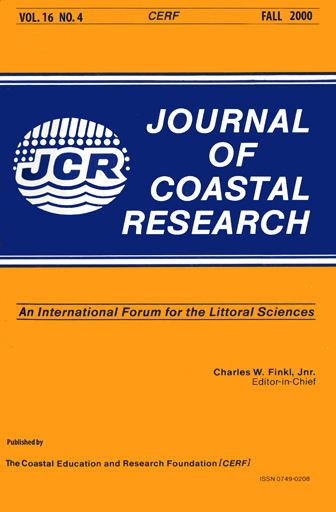Morphodynamic Controls on Tides and Tidal Currents in Two Macrotidal Shallow Estuaries, NE Australia
Keywords:
Tidal asymmetry, morphodynamics, estuary, mangroveAbstract
Field and numerical investigations on the hydrodynamics of shallow estuaries have suggested that the dominant current direction can be assessed through the examination of the water level record. Shorter rising tides induce stronger flood currents, whereas faster falling tides cause stronger ebb currents. Monthly measurements of tides and current velocities in two shallow macrotidal estuaries in eastern Australia show that the hydrodynamics are controlled by two topographical entities, namely the depth of the channel bed across the ebb tidal delta and the elevation of the mangrove banks. Vertical tidal attenuation and asymmetry are related to the degree of tidal truncation at low tide. Lower spring low tide levels increase tidal truncation inside the estuary, causing longer stationary tide levels at low tide and more pronounced tidal attenuation. Neap tides, although still very asymmetric, may propagate freely inside the estuary, as low tide level stays above the elevation of the channel. Velocity measurements show that the expected flood dominance, due to the sense of the vertical tidal asymmetry, occurs only during neap tides. As tides rise above the mangrove levels during spring cycles, stronger ebb fluxes are observed, and the system becomes overwhelmingly ebb dominant. Thus, based on current prognostic models for shallow estuary hydrodynamics, the spring-to-neap trend in vertical asymmetry radically opposes the trend in flow regime.


